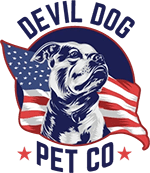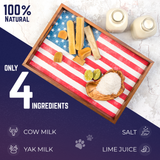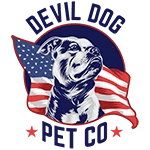Key Takeaways
- Elk jerky is made from thinly sliced, seasoned, and dehydrated elk meat.
- It is a portable and protein-dense snack with roots in wilderness tradition.
- Elk jerky has a mild game flavor and is exceptionally lean compared to beef jerky.
- Each ounce of elk jerky typically contains 13-15 grams of protein with minimal fat.
Table of Contents
- What is Elk Jerky?
- The Nutritional Edge, Why Elk Jerky Fuels Leadership
- Homemade Elk Jerky, A Step-By-Step Field Guide
- Elk Jerky vs. The Competition
- Elk Jerky for Dogs, Should You Share?
- Shelf Life, Storage, and Food Safety, Protecting Your Investment
- Best Elk Jerky Brands and Gear, Buying Guide
- Advanced Jerky Techniques, Get Bolder with Your Elk
- Troubleshooting Elk Jerky, Pro Solutions to Common Issues
- Why Elk Jerky Belongs in Every Leader's Kit
- Elk Jerky vs. The Competition, Comparative Analysis
- The Evolution of Premium Protein Snacks
What is Elk Jerky?
Elk jerky is thinly sliced, seasoned, and dehydrated elk meat, a portable, protein-dense snack rooted in wilderness tradition. Unlike beef jerky's heavy processing, elk jerky delivers a mild game flavor with exceptional leanness, typically packing 13-15 grams of protein per ounce with minimal fat.
Wild elk produces naturally hormone-free meat that's been sustaining hunters, soldiers, and outdoor enthusiasts for generations. The dehydration process concentrates nutrients while creating shelf-stable fuel that doesn't require refrigeration, perfect for tactical operations, backcountry adventures, or simply maintaining discipline in your nutrition routine.
For those looking to fuel their adventures or training sessions, Extra Large (XL) Whole Elk Antler Official Dog Chew and Medium THICK Whole Elk Antler Dog Chew offer long-lasting, natural options that complement the benefits of elk jerky for both you and your canine companion.
Download the FREE 10-Step Dog Prep Guide
The Nutritional Edge, Why Elk Jerky Fuels Leadership

Wild elk meat delivers superior nutrition compared to conventional livestock. With 90% lean protein and zero growth hormones, elk jerky provides clean fuel for demanding lifestyles. The high iron content supports oxygen transport during physical training, while B-12 maintains mental sharpness under pressure.
Smart operators choose elk jerky for its sustained energy release. Unlike processed snacks that spike blood sugar, the protein-fat ratio keeps you steady through long missions, whether that's a day of dog training or managing family chaos. The minimal sodium options available today eliminate the bloat factor that plagued military rations of the past.
If you're interested in learning more about the nutritional value and uses of elk, check out this in-depth guide on elk meat for additional insights.
| Per 1 oz | Elk Jerky | Beef Jerky | Turkey Jerky |
|---|---|---|---|
| Protein | 13-15g | 9-12g | 11-13g |
| Fat | 0.5-1g | 2-4g | 1-2g |
| Sodium | 200-400mg | 400-600mg | 300-500mg |
| Iron | High | Moderate | Low |
Homemade Elk Jerky, A Step-By-Step Field Guide
Making elk jerky at home gives you complete control over ingredients and quality. Start with fresh elk roasts or steaks, trim all visible fat, and slice ¼-inch thick against the grain. Fat causes rancidity, so precision in trimming determines shelf life.
The Preparation Process
Marinate sliced elk 6-24 hours in your chosen blend, keep it simple with salt, pepper, and garlic powder, or add heat with cayenne and paprika. The key is balance: enough salt to preserve (about 1 tablespoon per pound), but not so much it overpowers the natural game flavor.
Dehydrate at 160°F for 4-6 hours until the jerky cracks when bent but doesn't break completely. Oven method works with the door cracked open; dedicated dehydrators provide more consistent results. Test doneness by cooling a piece, properly dried jerky should be leathery but still flexible.
Elk Jerky vs. The Competition
When comparing jerky options, elk jerky consistently outperforms conventional alternatives in protein density and clean sourcing. Beef jerky often contains more fat and sodium, while venison can be tougher and gamier. Bison jerky comes close nutritionally but typically costs significantly more per ounce.
The Wild Game Advantage
Store-bought elk jerky from reputable sources eliminates the guesswork of home preparation while maintaining nutritional superiority. Wild elk feed on natural forage, producing leaner meat with higher mineral content than grain-fed livestock. This translates to jerky that satisfies hunger longer and provides sustained energy without artificial additives.
For serious nutrition discipline, elk jerky beats processed protein bars, nuts, and conventional snacks. The single-ingredient approach, just elk, salt, and spices, aligns with clean eating principles that support both physical performance and mental clarity.
Elk Jerky for Dogs, Should You Share?

Plain, unseasoned elk jerky can be safe for dogs in small amounts, but most commercial versions contain too much salt and spices for canine consumption. If you're making homemade jerky specifically for sharing with your dog, skip the salt entirely and avoid onion, garlic, or artificial sweeteners.
At Devil Dog Pet Co., we understand the temptation to share premium treats with your four-legged teammate. However, dogs get better nutrition and safety from purpose-built chews like our elk antlers, naturally shed, mineral-rich, and designed for canine dental health. Save the jerky for yourself and give your dog something crafted specifically for their needs.
Shelf Life, Storage, and Food Safety, Protecting Your Investment
Properly stored elk jerky maintains peak quality for 6-12 months when store-bought, or 2 weeks at room temperature when homemade. The key is controlling moisture and air exposure, vacuum-sealed packages in cool, dark storage extend shelf life significantly. Homemade jerky benefits from oxygen absorber packets and freezer storage for up to 6 months.
Spoilage signs are unmistakable: color changes from deep red-brown to gray or green, slimy texture, or off-odors resembling ammonia. White spots on jerky surface usually indicate salt crystallization, not mold, but when in doubt, discard it. Quality elk jerky should crack when bent but remain pliable, brittleness suggests over-drying or age.
For more on the unique properties and benefits of elk antlers, see this article on elk antlers and how they support canine health.
Best Elk Jerky Brands and Gear, Buying Guide
Premium elk jerky starts with ethical sourcing and transparent ingredients. Look for USDA-inspected facilities, wild or ranch-raised elk, and minimal ingredient lists, the best brands list elk, salt, and spices without fillers or preservatives. Avoid products with excessive sodium or artificial flavoring that masks the natural game taste.
Leading Elk Jerky Producers
Rocky Mountain elk jerky from established processors typically delivers consistent quality and flavor. Brands specializing in wild game understand proper handling and aging techniques that preserve the meat's natural characteristics. Regional producers often offer fresher products with shorter supply chains, resulting in better texture and taste.
For homemade production, invest in a quality dehydrator with adjustable temperature controls and adequate airflow. Models with stainless steel trays and digital timers provide consistent results across multiple batches. Expect to spend $100-200 for equipment that will process elk jerky reliably for years.
Advanced Jerky Techniques, Get Bolder with Your Elk

Master-level elk jerky requires understanding how marinades interact with lean game meat. Sugar-free versions rely on natural umami from soy sauce or Worcestershire, while heat comes from controlled capsaicin in cayenne or chipotle. The key is layering flavors, start with salt penetration, add acid for tenderness, then build complexity with spices.
Texture control separates amateur from professional results. Lower temperatures (145°F) for longer periods create chewier jerky ideal for sustained gnawing, while higher heat (165°F) produces crispier results that break cleanly. Batch preparation for extended operations requires precise documentation, record marinade ratios, drying times, and storage methods for repeatable results.
Field Ration Tip: Combine elk jerky with nuts and dried fruit in 2:1:1 ratios for balanced trail nutrition that sustains energy during long training sessions or outdoor operations.
Troubleshooting Elk Jerky, Pro Solutions to Common Issues
Tough, chewy elk jerky results from cutting with the grain instead of against it, or insufficient marinating time. Fix future batches by slicing perpendicular to muscle fibers and extending marinade contact to 12-24 hours. Over-salted jerky can't be corrected after drying, but soaking briefly in cold water before dehydration reduces sodium content.
Bland jerky indicates inadequate seasoning penetration or rushed preparation. Elk's lean profile requires aggressive seasoning, use 50% more spices than beef recipes suggest. If jerky develops white film during storage, it's usually salt bloom, not mold, but increase air circulation during drying to prevent future occurrences.
For additional safety tips and best practices on jerky making, refer to this FDA resource on jerky making safety.
Why Elk Jerky Belongs in Every Leader's Kit
Elk jerky represents the intersection of superior nutrition, ethical sourcing, and tactical practicality. Its protein density and shelf stability make it ideal fuel for demanding lifestyles, while the clean ingredient profile supports disciplined nutrition habits. Whether you're training dogs, leading teams, or maintaining personal standards, elk jerky delivers consistent energy without compromise.
Start with trusted commercial brands to understand quality benchmarks, then experiment with homemade versions to control ingredients completely. Like all aspects of extreme leadership, the discipline you apply to your nutrition directly impacts your ability to lead others, fuel yourself as you do your pack.
Elk Jerky vs. The Competition, Comparative Analysis

Elk jerky stands apart from other protein snacks through its exceptional lean-to-protein ratio and clean sourcing. Compared to beef jerky's 9-11g protein per ounce, elk delivers 13-15g with significantly less fat and sodium when properly prepared. The wild game advantage extends beyond nutrition, elk's natural diet produces meat free from growth hormones and antibiotics common in commercial beef operations.
| Jerky Type | Protein (per oz) | Fat Content | Flavor Profile | Ethical Sourcing |
|---|---|---|---|---|
| Elk Jerky | 13-15g | 0.5-1g | Mild, clean game taste | Wild/ranch, hormone-free |
| Beef Jerky | 9-11g | 1-3g | Rich, familiar | Varies widely |
| Venison Jerky | 12-14g | 0.5-1g | Strong, gamey | Wild-sourced |
| Bison Jerky | 10-13g | 1-2g | Sweet, robust | Grass-fed ranch |
Venison jerky matches elk's leanness but carries a more pronounced gamey flavor that can overwhelm newcomers to wild meat. Bison jerky offers excellent nutrition with a milder taste than venison, though it typically costs more per ounce than elk. For those prioritizing maximum protein density with minimal processing, elk jerky consistently outperforms conventional beef options while supporting sustainable hunting practices.
If you're curious about how elk antler chews compare to other options, you may find this comprehensive comparison of deer antler vs elk antler for dogs helpful.
For a selection of premium options, explore Premium Grade-A Elk Antler Dog Chews (Whole & Split Cuts) for your canine companion.
To learn more about the history and science behind jerky, visit this Wikipedia article on jerky.
The Evolution of Premium Protein Snacks
The elk jerky market continues expanding as consumers demand cleaner protein sources and transparent sourcing. Expect to see more small-batch producers offering custom spice blends and reduced-sodium formulations, while larger companies invest in sustainable elk ranching operations. The intersection of outdoor recreation growth and health-conscious eating creates sustained demand for premium wild game products.
Technology improvements in home dehydration equipment make artisanal elk jerky production increasingly accessible. Modern dehydrators with smartphone connectivity and precision temperature control eliminate much of the guesswork that previously limited homemade jerky quality. This democratization of production allows enthusiasts to experiment with flavor profiles impossible to find commercially.
As the veteran and outdoor communities continue driving demand for authentic, performance-oriented nutrition, elk jerky's position as the premier portable protein will only strengthen. The discipline required to source, prepare, and properly store elk jerky mirrors the leadership principles that create exceptional results in all areas of life.
For those with smaller dogs or puppies, consider the Extra Small - Split Elk Antler Dog Chew - 2 Pack as a safe and satisfying chew option.
Download the FREE 10-Step Dog Prep Guide
Frequently Asked Questions
What are the nutritional benefits of elk jerky compared to other types of jerky like beef or turkey?
Elk jerky is leaner than beef or turkey jerky, typically containing 13-15 grams of protein per ounce with minimal fat. It offers a mild game flavor and is naturally hormone-free, providing higher iron and B-12 levels that support sustained energy and mental sharpness without blood sugar spikes.
How should elk jerky be stored to maintain freshness and ensure food safety?
Store elk jerky in a cool, dry place away from direct sunlight to preserve freshness. Properly sealed, it can last up to six months without refrigeration. Avoid moisture exposure to prevent mold and spoilage.
Is elk jerky safe for dogs to eat, and are there any precautions to consider?
Elk jerky is safe for dogs in small amounts if it contains no added spices, salts, or preservatives. Always offer plain, natural jerky and monitor your dog for any digestive upset. Keep portions moderate and avoid jerky with harmful additives.
What is the best method for making homemade elk jerky to maximize flavor and shelf life?
Slice elk meat thinly and marinate with simple, low-sodium seasonings to enhance flavor without additives. Dehydrate at a consistent low temperature until fully dried to lock in nutrients and extend shelf life. Store in airtight containers in a cool, dry environment for best results.






